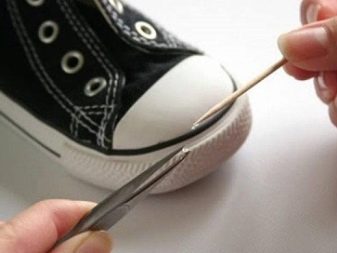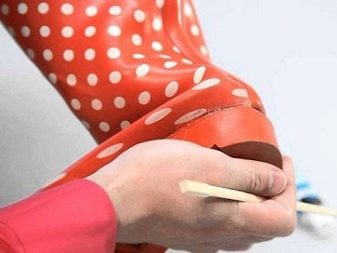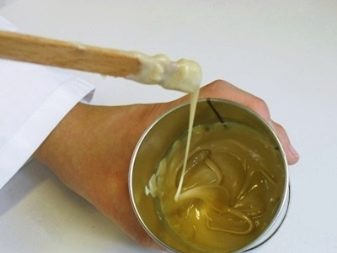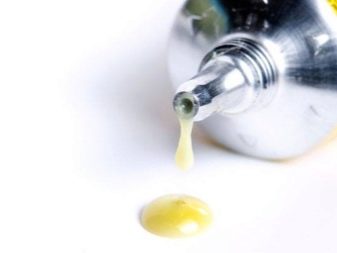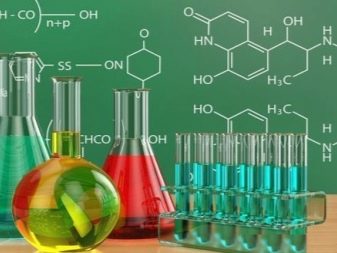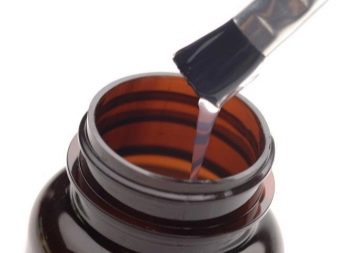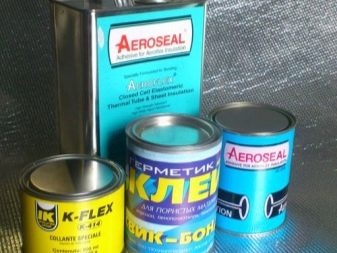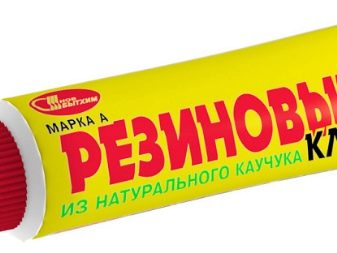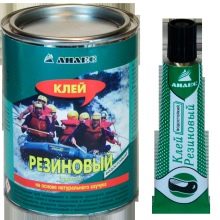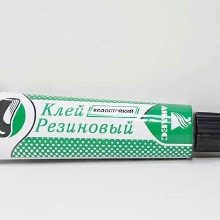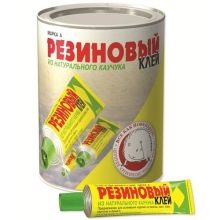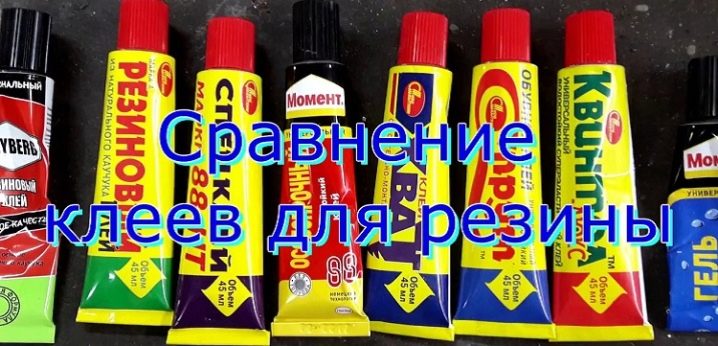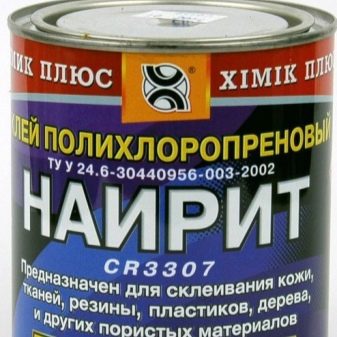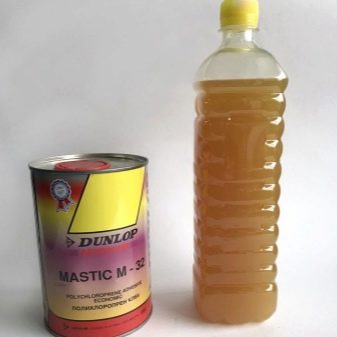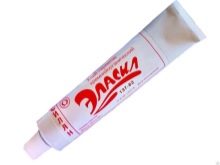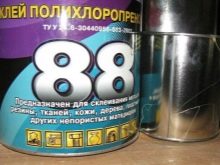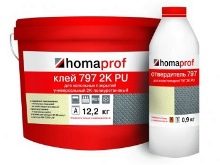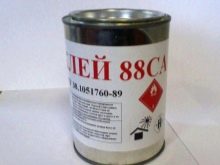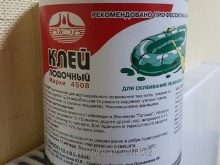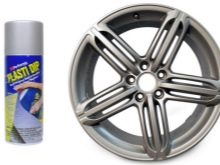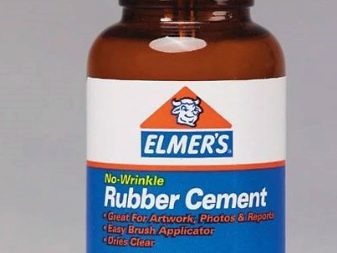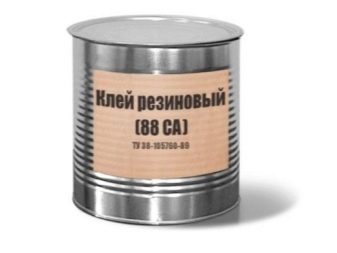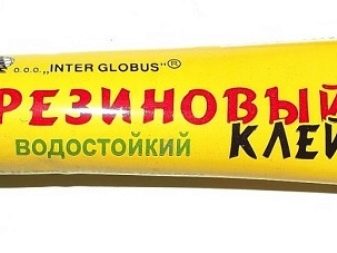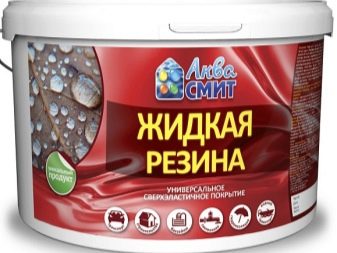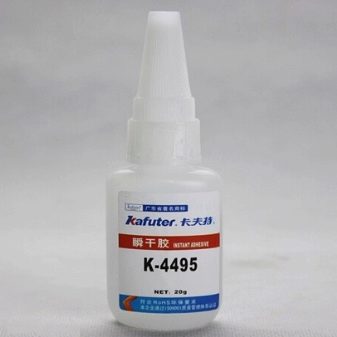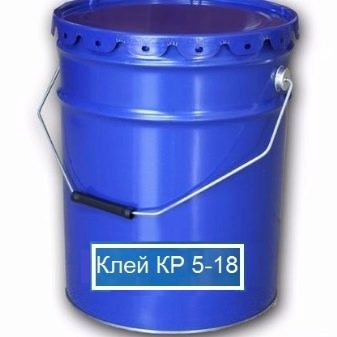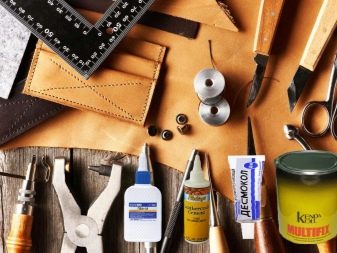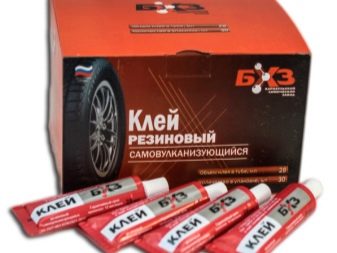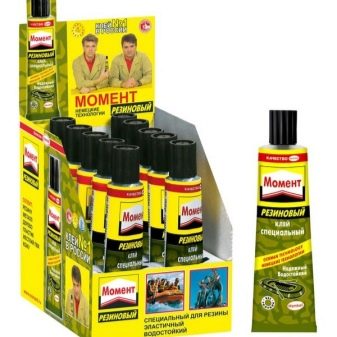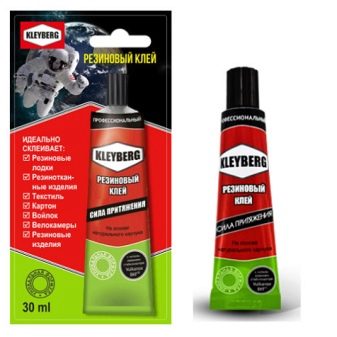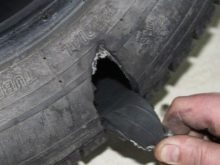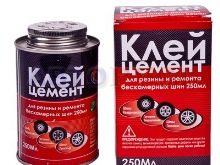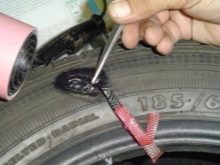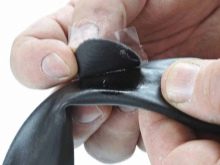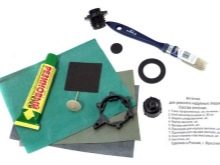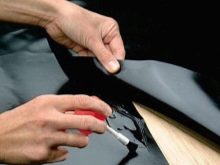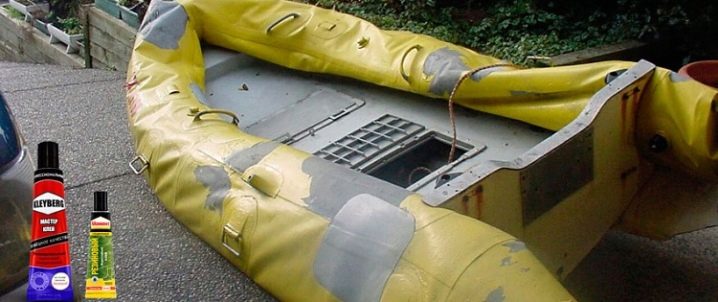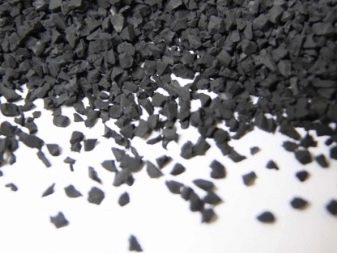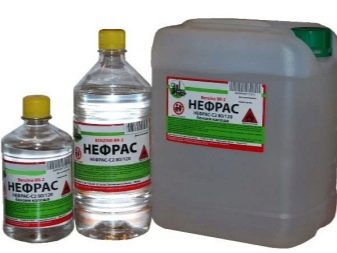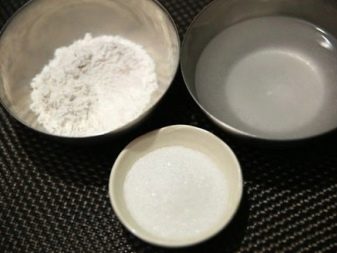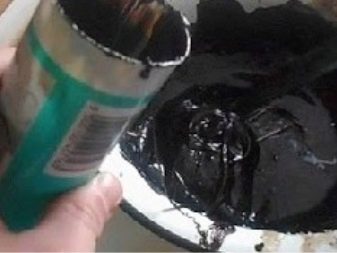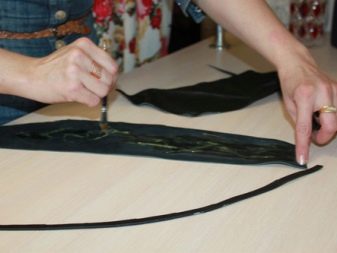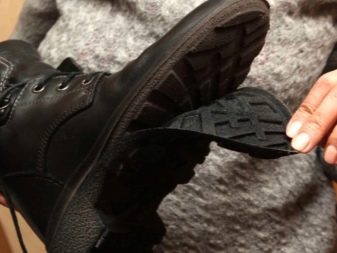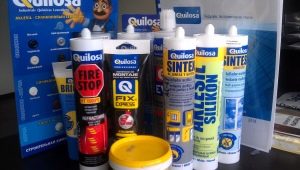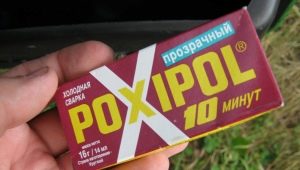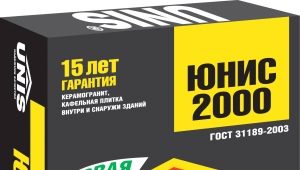Rubber glue: types and characteristics
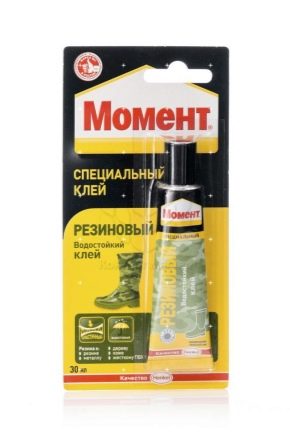
Every person has to use glue in his life. It may be different, including rubber. Rubber glue attracts more and more interest. It should get acquainted with its varieties, characteristics and characteristics, learn how to choose a quality product, as well as consider the instructions for use.
Special features
Rubber-based rubber glue has found wide application in many industries and spheres of human activity. It can be used to work with a large number of materials.
Rubber glue remains elastic even after complete curing. This is its main feature, for which it is valued and chosen to work with elastic materials. In the solid state, it resembles rubber as much as possible.
When choosing glue you need to pay attention to the composition. It should be as close as possible to the parts to be glued. Some manufacturers do not use natural rubber, and synthetic. And also each of them uses their own recipe.
In most cases, the formulations are unique. The characteristics of the final product, operational properties and characteristics strongly depend on the recipe used.
Composition
In the domestic market represented a large amount of rubber glue. You can choose transparent or industrial, elastic or very durable, for different purposes and materials. In any case, all these substances will have a similar composition. Rubber glue is a natural rubber that is diluted in a solvent. Therefore, speaking of the rubber product, rubber adhesive is always implied.
The following substances can be used as solvents:
- compounds with chlorine;
- aromatic;
- ethyl acetate with nefras.
The first two options are toxic and used in minimal amounts. The last solvent received much more application.To reduce the fire hazard and toxicity, use water-based latexes. Such a composition, although safe, is less sticky.
Resins and polystyrene with a low molecular weight structure may be present in the glue, which is made from natural rubber. Their number in the mixture is limited, otherwise the elasticity of the seam is lost.
The role of hardeners is performed by agents that are selected in accordance with the rubber used. In most cases, oxides of metals and sulfur are used. Amines are well suited for cold vulcanization. Also in the composition of the rubber glue contains plasticizers. Mineral oils do a great job with this role. The stabilizer is ethanol, which prevents the formation of a gel. Carbon black is used as a filler.
The composition, as can be seen, is complex and diverse. Each manufacturer has a unique recipe, which is not amenable to disclosure.
Rubber glue production is regulated by GOST. The mixture that meets these standards, is the highest quality.
Kinds
The rubber glue is divided into types according to two main features: the amount of dry residue and the characteristics of the rubber composition.
The production of rubber adhesive mixtures is carried out in accordance with GOST 2179-78 and TU. According to these regulations, the amount of dry residue can be from 6 to 8% and from 8 to 12%.
The product belonging to the first category corresponds to the mark A. The products from the second category are assigned the mark B.
Depending on the composition of the rubber, there are several types of adhesive.
- Material based on natural rubber may not be used in all cases. For example, for some areas of the industry the use of such glue is unacceptable. The reason lies in the low resistance against the effects of aggressive conditions. And also the natural component is not able to withstand high temperatures.
- Chloroprene material incorporates divalent metal oxides. Such glue is more reliable, durable and resistant when it comes to the effects of aggressive factors. To work with metal, glass, plastic and wood is better to choose just such a substance.
- Nitrile butadiene rubber makes the mixture waterproof, which determines the scope of its use. In the composition, although there is sulfur, but also the recipe assumes the presence of thiurams.
- Silicone rubber allows you to create a special glue.Tetrabutoxylan is necessary for its hardening. This adhesive is used to work with a homogeneous rubber.
- Styrene butadiene rubber serves as a raw material for the manufacture of industrial rubber glue. It is characterized by weak bonding abilities, therefore it is most often used for the production of adhesive tape.
These are not all types of rubber used to make rubber. Other options are less common, and the use of such mixtures is limited.
It is worth getting acquainted with the brands that are available for Russian users:
- A great rubber sealant produced by the Russian manufacturer. This brand is well known to all - 88 N. This glue is applicable to many materials, it is highly reliable and durable. It is perfectly diluted with benzene, resulting in a homogeneous mass.
- Glue brand 4508 widely used for gluing rubber and textile technical products. It requires careful preparation of the work area.
- Under the brand name Plasti Dip hiding paint, which is based on rubber. This material is used to cover the external parts of the car, which helps to protect it from external factors and improve the appearance.
- In the shoe industry is often used rubber adhesive rubber cement. The parts stick together loosely and even after a while they can be easily separated. Such qualities are valuable when fastening external parts to the shoes and fixing the lining.
- Clay 88 SA is based on colloidal rubber and phenol-formaldehyde type resin. These components are mixed with nefras and ethyl acetate. Glue turns out very strong, reliable and durable. It is widely used during repairs and even in the construction industry.
Specifications
A large selection of rubber adhesives determined an extensive set of technical characteristics that may be inherent in a particular product. It is not difficult to choose just the option that will best meet the requirements of the user.
- Waterproof glue Especially relevant when repairing rubber boats, leather goods and shoes. Another composition is not suitable for this work. Need adhesive material only with a waterproof effect.
- High strength adhesive able to withstand aggressive operating conditions. Such materials are used in the field of auto repair and construction.It should be handled with care, since it will be difficult to remove the dried adhesive and redo the work.
- Quick-drying rubber glue allows you to shorten the process of gluing materials. But with such material it is difficult to glue large parts. Most rubber compounds dry quickly when heated.
- Elastic seam - This is the main feature that is characteristic of rubber adhesive material. This feature allows you to glue soft materials while maintaining their structure. When dry, the glue becomes rubbery: soft, flexible, supple and durable.
- Oil resistant glue on the basis of rubber is necessary for work with petrol-resistant and oil-resistant rubber products. An example of such mixtures is leukonat, B-10 and KR-5-18.
Many manufacturers produce universal formulations that combine all the described characteristics or most of them. When choosing an adhesive, it is necessary to carefully study its technical characteristics and operating conditions, which it is able to withstand.
Purpose
Rubber glue can be used to glue virtually any material. For domestic needs, the most commonly used adhesive mixture is brand A. With its help, it is possible to repair chambers from rubber, leather goods, to connect rubber to paper surfaces. And also such glue can be used for fixing carpet, linoleum and other floor coverings. There are separate types of rubber glue that are suitable for metal and glass.
For industrial purposes, the most commonly used glue is 4508. It is suitable for textile coatings, repair and production of rubber products, vacuum products. For the organization of flooring made to use polyurethane glue. It is used for crumb rubber and tiles. Such a tool is valued for its high resistance to weathering and mechanical damage, repeated friction, high pressure and many other loads.
Manufacturers
Russian user is familiar Moment glue. This is really the best option for residential use. It has an extensive scope of use and allows you to easily solve most of the problems that may arise in everyday life.The only drawback is the rapid hardening of the glue, which makes the tube disposable. Even after a tight closure, the glue in the tube will still harden and become unsuitable for further use.
Company "Novbythim" from St. Petersburg has an extensive production of household chemicals and paint products. Among such a wide range there is also a special 88-NT rubber special glue.
Ecoline Company produces a range of rubber compounds. Among this range it is easy to choose the right option for any job. Products are manufactured in various volumes, which is user-friendly. Stamps from this manufacturer are often purchased for various industries.
Instructions for use
You can choose the most expensive and reliable glue, but the desired result will not be achieved. The reason will be hidden in the improper use and non-compliance with the instructions. Therefore it is necessary to consider the rules for the use of rubber glue at home.
Gluing can be done in two ways:
- Cold glueing performed at room temperature.In this case, the complete drying of the seam will have to wait several hours or even several days.
- Hot bonding involves the use of temperatures from +70 to +160 degrees. At the same time, the duration of the drying of the seam is significantly reduced and is usually only a few minutes.
Before using the mixture, it is imperative to make a high-quality and thorough preparation of the working area. The essence of the preparation is to perform the following steps:
- abrasive processing, which is fine fine sandpaper;
- thorough degreasing and removal of complex contaminants;
- surface treatment with a special cleaner that will remove dust, including the smallest particles.
Such preparation will provide better bonding of surfaces and increase the reliability of the seam. And also when working with any rubber glue, you must follow rules such as:
- All rubber adhesives are flammable, therefore, it is strictly prohibited to work near an open flame source;
- instructions for use must be followed to the smallest nuances, it is impossible under any circumstances to deviate from the manufacturer's recommendations;
- When performing hot glueing, it is convenient to use a building dryer, which will make it possible to safely bring the glue temperature to the desired temperature in a short time;
- hot gluing is performed only in the open air, as the composition may produce harmful pairs for humans.
Important! Different instructions for use can be applied to different types of adhesive rubber compounds. All the necessary information is on the packaging, so you should carefully examine it before starting work.
Rubber glue can be made by hand. There is nothing complicated about it.
We need to act as follows:
- finely chopped rubber is required to be diluted with nefras;
- the mixture is placed in a water bath and heated to +50 degrees;
- to completely dissolve the rubber, you will need to wait 2 hours;
- In the mixture, which will resemble sour cream, you must add 4% sulfur and 1% magnesia.
The preparation of the mixture is completed. The final product is waterproof, durable and reliable, suitable for use with virtually any material.
Useful tips
The choice of rubber adhesive should be based on points such as:
- The parameters of the rubber to be glued are taken into account;
- how much material is ductile or tough;
- conditions in which the work will be carried out;
- operational features of the repaired product;
- external characteristics of the product, the repair of which is performed;
- composition and features of the adhesive composition.
In the next video, you are waiting for tests on gluing a rubber band to a stainless steel surface with rubber superglue "SK.401".
